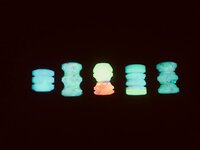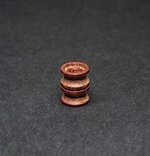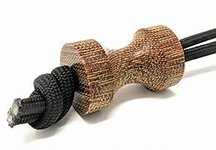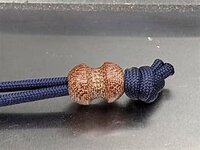Lance Strahl
Member
Hello! Thanks for the add to the forum!
While I'm not new to woodworking, I have never tried turning. My other big hobby is knives, and a lot of guys have lanyard beads and pulls. Many are made from metal, but occasionally you see them in other materials. I'd like to make some in natural materials such as wood and bone. I believe this would overlap with the pen turning community pretty well. As I have not tried any turning before, I would love to hear some recommendations on what you think this best tools to get started would be, both lathe and tools, and any tips or techniques.
I've attached some reference pictures for anyone who hasn't seen these before, they are typically about 1" long and 1/2" in diameter.
Also if anyone out there has turned mammoth, I'd love to hear from you.
Any help or advice would be appreciated.
While I'm not new to woodworking, I have never tried turning. My other big hobby is knives, and a lot of guys have lanyard beads and pulls. Many are made from metal, but occasionally you see them in other materials. I'd like to make some in natural materials such as wood and bone. I believe this would overlap with the pen turning community pretty well. As I have not tried any turning before, I would love to hear some recommendations on what you think this best tools to get started would be, both lathe and tools, and any tips or techniques.
I've attached some reference pictures for anyone who hasn't seen these before, they are typically about 1" long and 1/2" in diameter.
Also if anyone out there has turned mammoth, I'd love to hear from you.
Any help or advice would be appreciated.




